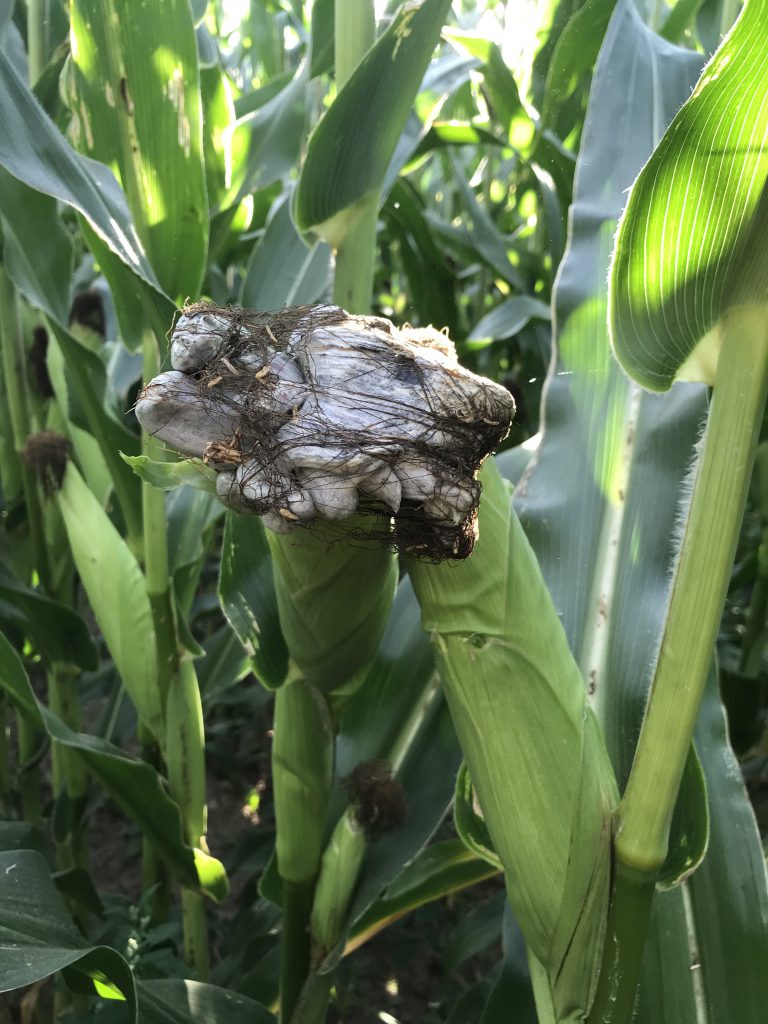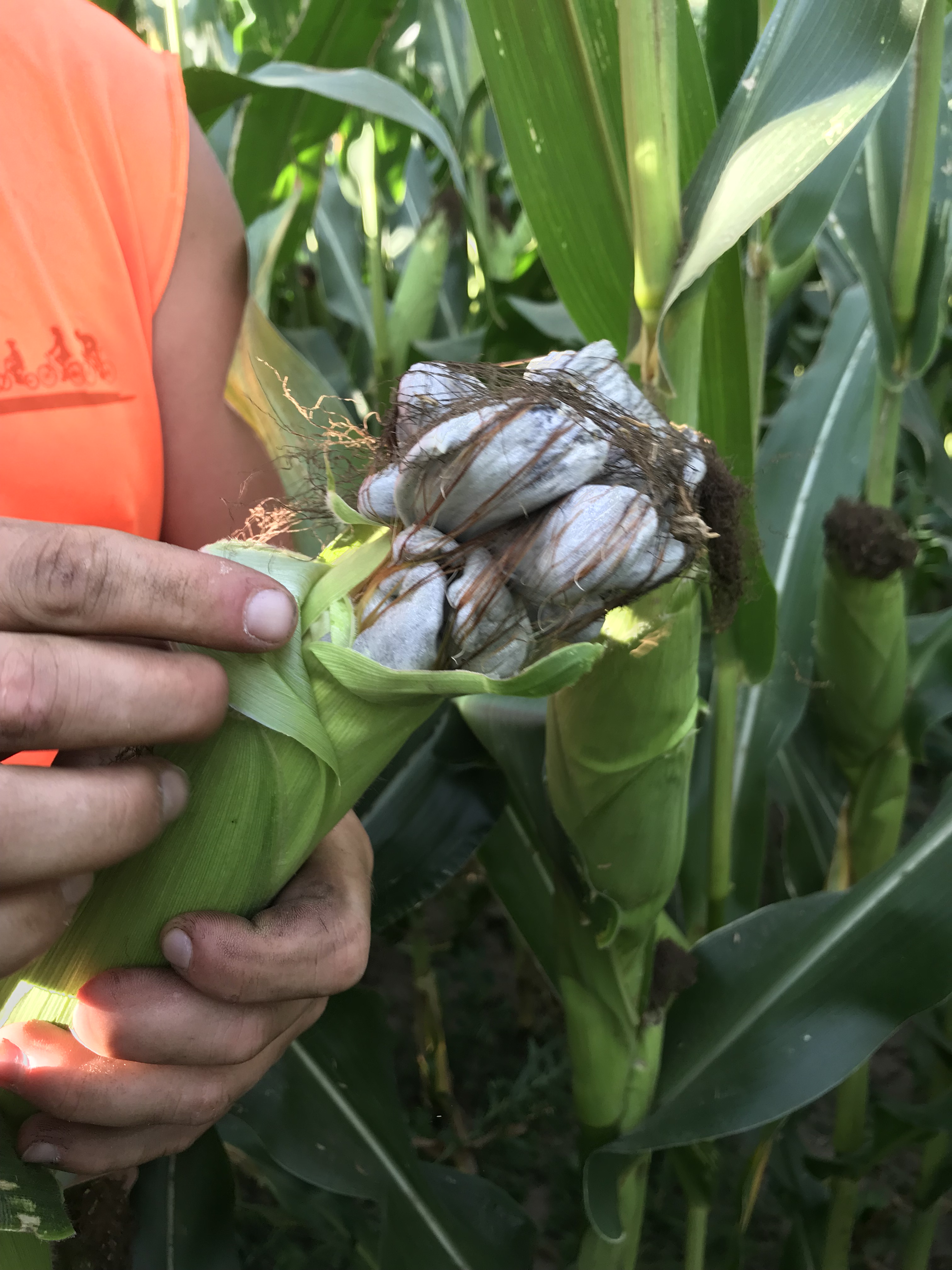Oh, smut!

Have you ever looked in your garden and wondered what some of the odd bits growing in your plants and vegetables could be? Today, we’re going to talk about one such plant – Corn Smut.
Ontario produces some of the world’s top quality corn – it’s known to be nutritious and safe. But sometimes, Mother Nature has some additional plans for what will grow in an Ontario farmer’s fields of grain.
The above picture is corn smut – a commonly found fungus – growing on an ear of grain corn. Any gardeners reading may recognize this fungus as it is often found in small gardens. Corn smut produces mushroom shaped galls (balls or lumps of spores) on the ears, tassels, stalks and leaves of growing corn. It survives in plant debris in the soil and can be moved via wind and water to neighbouring plants or fields.
Farmers know that having a fungus on their harvested grains, means the grain will likely be rejected at the grain elevator. Luckily smut isn’t considered to be toxic or dangerous if consumed. In fact , smut is considered to be a Mexican delicacy dish!
There are definitely other diseases out there that are dangerous to eat for people or animals and those are called mycotoxins. #YourFarmers work each year to eliminate any risk for dangerous or destructive pest’s threats by using pesticides. Crop rotations, cover crops, and tillage are other ways to prevent pest threats in the grain.
Food safety, health and quality begins right in the field by making sure the plants are healthy and receiving the best care they need. This ensures the grains will be nutritious, safe and will meet the quality standards needed for food consumption. Pesticides are used simply to protect the growing grains as a last resort before a pest threat can cause significant damage.

Luckily, this field only had a few ears of corn destroyed by the smut fungus, and the rest of the field looked healthy and thriving under the hot dry conditions we have had this summer.
